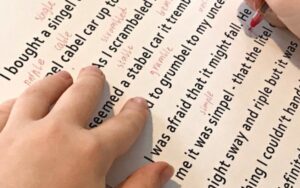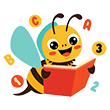Spelling and the Brain
Memory hooks are a great tool for spelling words that don’t follow the rules, and both adults and kids like using them. These are a few of the well-known ones:
- Take a small word within the bigger term and give it a little backstory. For example, you may discover the word “pal” and tell yourself that the principal of the school is your pal. The term “lie” is a part of the word “believe.” You wish to avoid falling for a falsehood. “It” (important) contains the word “ant.” Even if he is too little, an ant strives to feel significant. It’s enjoyable and highly successful to do this. You must have favorites, I’m sure.
- You can use a single sound that is exaggerated or uttered in an unusual way to create an aural hook. We commemorate this as “Wed NES day.” We say “comBUH” when we use it for silent letters, such as in comb. Playing with words like that is enjoyable.
- Put a crazy image right on a letter to visually liven it up and make it less silent or confused. I found that this was the most effective approach for my “Twice Exceptional” eighth graders,
- Writing on their back causes their words to travel via numerous brain regions. They have to engage various brain regions that enable them to recognize the letters in an entirely different way. They are not making any use of their sight. Their brain needs to form a meaningful word that they can recognize by sight from the letters they have recognized by touch on their back.
- Imagine that your child’s back serves as a writing surface, and use two fingers to write their spelling words on it. Since they will be closely deciphering the word you are writing, you might need to write more slowly. Once they have identified the word you are writing, wipe their back softly to “erase” the word. This is crucial whether they have spelling difficulties or are dyslexic. “Erasing” helps their brain “let go” of what they were just intensely figuring out and get ready for a new word.
IMPORTANT: Only assign this task once the student has written the word in prior tactile exercises and has a firm understanding of its definition in addition to a visual memory of it.
Enjoy “playing” while your children maintain their spelling proficiency this summer. Their joyful faces and emotions will delight you!


